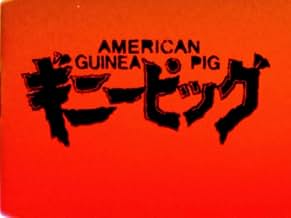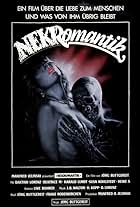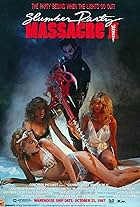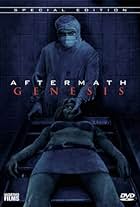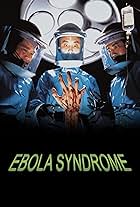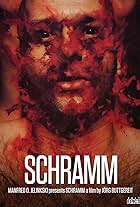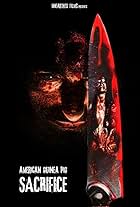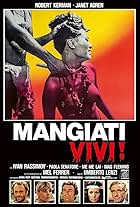Two women are abducted by a group of snuff filmmakers and brought into a Hellish nightmare of unmistakable brutality, viciousness and destruction that will leave every viewer shocked, amazed... Read allTwo women are abducted by a group of snuff filmmakers and brought into a Hellish nightmare of unmistakable brutality, viciousness and destruction that will leave every viewer shocked, amazed and awestruck.Two women are abducted by a group of snuff filmmakers and brought into a Hellish nightmare of unmistakable brutality, viciousness and destruction that will leave every viewer shocked, amazed and awestruck.
- Director
- Writer
- All cast & crew
- Production, box office & more at IMDbPro
Storyline
Did you know
- TriviaWhen Eigh8t The Chosen One was given the script of American Guinea Pig by Stephen Biro, he thought he was going to have small part or just a quick appearance. It wasn't until after reading it, Stephen told Eigh8t he wanted him to play "The Actor".
- GoofsAmy (first victim) should have died well before the tourniquets were untied.
- Quotes
The Director: You're doing a great job! I had to change my underwear!
- ConnectionsFeatured in The Cine-Masochist: DEADBEAT AT DAWN (2015)
Featured review
In 1985 a film was produced that depicted the graphic torture and murder of a young women by a group of men in a warehouse. Their intent? To study the human body's threshold for pain. Originally titled Unabridged Agony, but better known as The Devil's Experiment, this film was the first in a series of what would later become the most controversial films to come out of all of Japan; the Guinea Pig films.
It wasn't until the release of the series second film, Flower of Flesh and Blood, that these films started to gain notoriety. Directed by Hideshi Hino, Flower of Flesh and Blood begins with a message from the director detailing that his inspiration to make the film came from a genuine snuff film he received in the mail. Expressing that what we are about to see is a reimagining of the true horrors that he witnessed on screen. The film then proceeds into a world of debauchery as a man dressed as a samurai systematically begins to dismantle a drugged woman tied to a table, limb by limb. The film's depictions of graphic violence were so realistic that many thought the film to be real snuff. Probably most infamously, in 1991 actor Charlie Sheen watched a segment of the film, and convinced that what he just watched was the filming of an actual homicide, decided to contact the FBI. The Bureau implemented an investigation but dropped it after Hino was able to demonstrate that what was shown was all done through special effects.
The series further gained infamous reputation when the sixth film in the series, Devil Doctor Woman, was found in the videotape collection of child murder Tsutomu Miyazaki. This prompted a wide debate on graphic violence in film and its perceived association with real life implications of violence. In the end, six films came out of the Guinea Pig series before going out of production over such significant controversy. Even with the series death, the films had garnered a cult following, and the series was bootlegged and shared throughout the world within the underground horror collecting community.
In 2005 Stephan Biro had bought the rights to the Guinea Pig series and launched his distribution company, Unearthed Films, with the first official U.S. release of the series. This is where the American Guinea Pig series begins. It was now illegal to make any films with the Guinea Pig name in Japan, ultimately leaving the series dead in the water. That did not mean the series could not continue in the United States, and so in 2014 Biro wrote and directed the first film in what would become America's adaptation and homage of Japan's controversial legacy.
Bouquet of Guts and Gore is the first film to come out of the American Guinea Pig franchise, and it is the film that bridges the Japanese and American series together. Where Flower and Flesh and Blood presents itself as the reimagining of a snuff film that Hino received in the mail, Bouquet of Guts and Gore presents itself to be the very film that Hino watched. Except instead of it being a lone depraved mad man dismembering a woman on a table for his own enjoyment, it is an underground production company that produces snuff films for the black market; where we observe two women in similar circumstances, except their deaths are much more drawn out, much more mean spirited, and much more viscerally depicted.
For those seeking plot, character development, and story, this film is not for you. In its truest sense, this film is an exhibition of how much depraved realism can be created with practical effects on screen. It is a love letter to extreme cinema. It is a test of endurance and moral character. It is devoid of plot because plot is not why this film is watched. There is no important narrative arch because this film is simply intended to show life end. This film has taken the primary elements of extreme horror and stripped it down to its most basic components: graphically displayed violence and gore. This film is a gorehounds wet dream.
That does not mean this film does not come with its set of drawbacks. For one, the film's opening sequence in which our two female victims are captured is nonsensical and does not help develop a sense of realism. This film is shot in a found-footage fashion, which is necessary in providing the feeling that what we are watching is a genuine snuff film. But what the film opens with is our two female characters walking to their car in a suburban neighborhood, observed from the vowaristic perspective of their soon to be abductors filming them. Yet many of the shots chosen in this sequence would place the camera man directly infront, or in eyes view, of the two women. Secondly, how the women are abducted is silly. The women pile into an impressive muscle car with the windows already rolled down. As they sit and begin to start the car a hidden figure in the back seat is seen wearing a gas mask, and ignites a noxious gas. This gas is seen billowing out of the car windows past the two women, yet both of them collapse in their seats into unconsciousness. Our gas masked figure then takes the role in the driver's seat and then speeds away. The whole segment feels forced, as if the whole scene was wrote so that they could use the car the car in the film.
That said, once the scene is set and our victims are captured, the film dramatically improves from there. In fact, though I found the first few moments of the film to be counterproductive to its intended tone and theme, I am quickly able to dismiss it, understanding that this is Biro's first film, ever, and how quickly the film recovers once the action begins.
Regarding what follows, I have no interest in providing any spoilers. I will say however, that the film's practical effects are top notch. Marcus Koch is the special fx artist on this project, and he did a phenomenal job. The violence looks real, and the violence looks vicious. When compared to Flower of Flesh and Blood, which has dated quite a bit since its initial release, Bouquet pics up the pieces and presents something that looks very much like the real thing. For fans of the original Japanese films, the American Guinea Pig series starts off with a promising first feature film. Bouquet of Guts and Gore is a must watch for any fan or collector of extreme cinema. It is grueling, raw, and does not seem to know or care if it has crossed the line. The film ends with a sequence that will shock and disturb likely even the most seasoned of extreme cinophiles.
It wasn't until the release of the series second film, Flower of Flesh and Blood, that these films started to gain notoriety. Directed by Hideshi Hino, Flower of Flesh and Blood begins with a message from the director detailing that his inspiration to make the film came from a genuine snuff film he received in the mail. Expressing that what we are about to see is a reimagining of the true horrors that he witnessed on screen. The film then proceeds into a world of debauchery as a man dressed as a samurai systematically begins to dismantle a drugged woman tied to a table, limb by limb. The film's depictions of graphic violence were so realistic that many thought the film to be real snuff. Probably most infamously, in 1991 actor Charlie Sheen watched a segment of the film, and convinced that what he just watched was the filming of an actual homicide, decided to contact the FBI. The Bureau implemented an investigation but dropped it after Hino was able to demonstrate that what was shown was all done through special effects.
The series further gained infamous reputation when the sixth film in the series, Devil Doctor Woman, was found in the videotape collection of child murder Tsutomu Miyazaki. This prompted a wide debate on graphic violence in film and its perceived association with real life implications of violence. In the end, six films came out of the Guinea Pig series before going out of production over such significant controversy. Even with the series death, the films had garnered a cult following, and the series was bootlegged and shared throughout the world within the underground horror collecting community.
In 2005 Stephan Biro had bought the rights to the Guinea Pig series and launched his distribution company, Unearthed Films, with the first official U.S. release of the series. This is where the American Guinea Pig series begins. It was now illegal to make any films with the Guinea Pig name in Japan, ultimately leaving the series dead in the water. That did not mean the series could not continue in the United States, and so in 2014 Biro wrote and directed the first film in what would become America's adaptation and homage of Japan's controversial legacy.
Bouquet of Guts and Gore is the first film to come out of the American Guinea Pig franchise, and it is the film that bridges the Japanese and American series together. Where Flower and Flesh and Blood presents itself as the reimagining of a snuff film that Hino received in the mail, Bouquet of Guts and Gore presents itself to be the very film that Hino watched. Except instead of it being a lone depraved mad man dismembering a woman on a table for his own enjoyment, it is an underground production company that produces snuff films for the black market; where we observe two women in similar circumstances, except their deaths are much more drawn out, much more mean spirited, and much more viscerally depicted.
For those seeking plot, character development, and story, this film is not for you. In its truest sense, this film is an exhibition of how much depraved realism can be created with practical effects on screen. It is a love letter to extreme cinema. It is a test of endurance and moral character. It is devoid of plot because plot is not why this film is watched. There is no important narrative arch because this film is simply intended to show life end. This film has taken the primary elements of extreme horror and stripped it down to its most basic components: graphically displayed violence and gore. This film is a gorehounds wet dream.
That does not mean this film does not come with its set of drawbacks. For one, the film's opening sequence in which our two female victims are captured is nonsensical and does not help develop a sense of realism. This film is shot in a found-footage fashion, which is necessary in providing the feeling that what we are watching is a genuine snuff film. But what the film opens with is our two female characters walking to their car in a suburban neighborhood, observed from the vowaristic perspective of their soon to be abductors filming them. Yet many of the shots chosen in this sequence would place the camera man directly infront, or in eyes view, of the two women. Secondly, how the women are abducted is silly. The women pile into an impressive muscle car with the windows already rolled down. As they sit and begin to start the car a hidden figure in the back seat is seen wearing a gas mask, and ignites a noxious gas. This gas is seen billowing out of the car windows past the two women, yet both of them collapse in their seats into unconsciousness. Our gas masked figure then takes the role in the driver's seat and then speeds away. The whole segment feels forced, as if the whole scene was wrote so that they could use the car the car in the film.
That said, once the scene is set and our victims are captured, the film dramatically improves from there. In fact, though I found the first few moments of the film to be counterproductive to its intended tone and theme, I am quickly able to dismiss it, understanding that this is Biro's first film, ever, and how quickly the film recovers once the action begins.
Regarding what follows, I have no interest in providing any spoilers. I will say however, that the film's practical effects are top notch. Marcus Koch is the special fx artist on this project, and he did a phenomenal job. The violence looks real, and the violence looks vicious. When compared to Flower of Flesh and Blood, which has dated quite a bit since its initial release, Bouquet pics up the pieces and presents something that looks very much like the real thing. For fans of the original Japanese films, the American Guinea Pig series starts off with a promising first feature film. Bouquet of Guts and Gore is a must watch for any fan or collector of extreme cinema. It is grueling, raw, and does not seem to know or care if it has crossed the line. The film ends with a sequence that will shock and disturb likely even the most seasoned of extreme cinophiles.
- Matthew-traugh
- Aug 11, 2018
- Permalink
- How long is American Guinea Pig: Bouquet of Guts and Gore?Powered by Alexa
Details
- Release date
- Country of origin
- Language
- Also known as
- Американская морская свинка: Букет из крови и кишок
- Filming locations
- Production company
- See more company credits at IMDbPro
- Runtime1 hour 13 minutes
- Color
- Sound mix
- Aspect ratio
- 4:3
Contribute to this page
Suggest an edit or add missing content

Top Gap
By what name was American Guinea Pig: Bouquet of Guts and Gore (2014) officially released in India in English?
Answer


